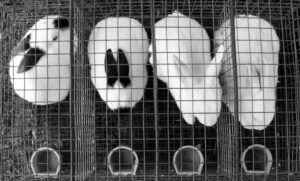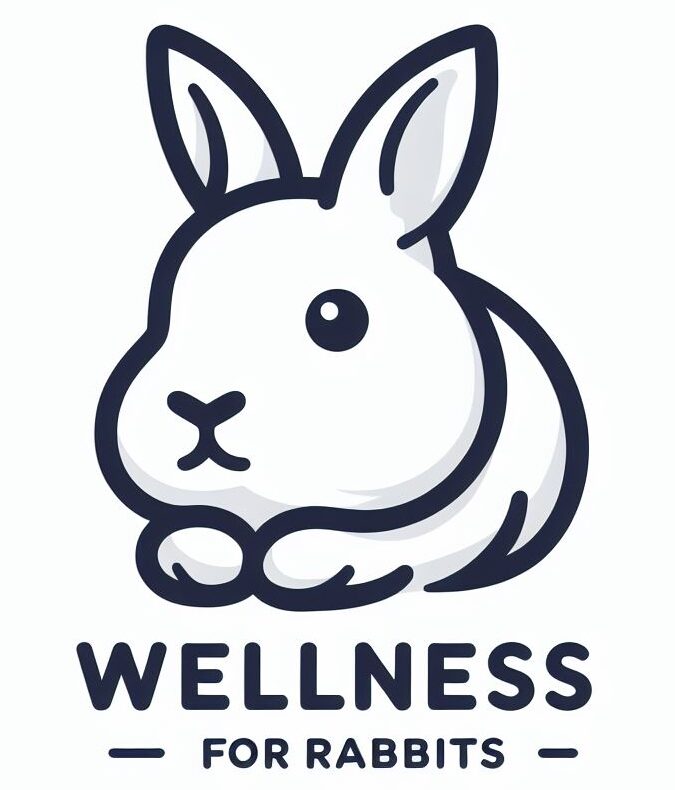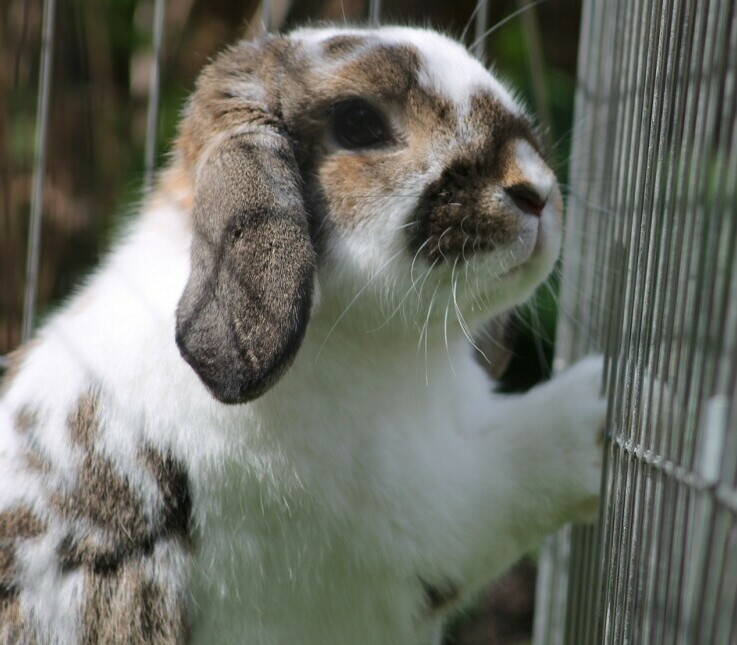Typically, the first thing that comes to mind when thinking of rabbit housing is a cage. While this is the most marketed option, it is not the most safe and most comfortable housing for pet rabbits.
Welcoming Your Furry Friend: Essentials of Rabbit Housing
Whether you are a new rabbit owner or have been in the game for many years, it is always helpful to revisit what makes a safe rabbit habitat.
Housing plays a major role in a rabbit’s overall well-being, the space a rabbit lives in allows them to express their instincts. Rabbits are very smart animals and if they are not provided with proper stimulation they will resort to destructive behaviors to express their instincts. This is why it is so important to make sure your rabbit has enough room to exercise and play.

Even though cages and hutches might seem like the easiest option for rabbit housing, they do not allow your rabbit to run and hop around as they desire. Rabbits will flourish the most when they are allowed to free roam or have a large area of a room sectioned off for them. If you are considering allowing your rabbit to free roam it is very important to rabbit-proof the space to ensure your rabbit’s safety. Rabbit-proofing not only protects your rabbit but also your items so that you do not have to worry about leaving your rabbit alone in the space.
Designing a Bunny-Safe Habitat: Rabbit-Proofing Your Home
The first step to rabbit-proofing your room is to assess the state of your room. This means looking around for ANY potential hazards or simply anything you wouldn’t want to be chewed. The easiest way to do this is to get down on your rabbit’s level and look throughout the room, including corners, behind/under furniture, and any little nooks and crannies. Rabbits can fit in surprisingly small spaces so keep that in mind.
You want to be looking out for electrical cords, furniture corners, baseboards, and carpets. These are all things you may need to protect in your room so that your rabbit won’t chew or dig them. Plants are another thing to look out for. Some plants are toxic to rabbits and need to be kept out of reach at all times. Some plants are okay to be left on the floor but your rabbit may eat as a snack! I have learned it is best to keep all pants on shelves or furniture unless they are very large.
Next, you will want to remove any small items like bags, books, shoes, and clothes from the floor. Remember, anything you leave on the floor your rabbit will potentially chew. On the bright side, rabbits also motivate you to keep your room clean and tidy!
If you are looking for more details regarding How to Rabbit Proof a Room check out my link for more information!
Comfort Meets Functionality: Furnishing Your Rabbit’s Home
Along with removing any potentially dangerous items, you will also want to add toys and other items to make your room comfortable and inviting for your rabbit.
The first and most important aspect of your rabbit space is a good litter box setup. Rabbits need privacy to feel comfortable using the litter box regularly. I suggest some sort of hidden litter box enclosure as this is what I have found my rabbit feels the most enjoyable. Of course, this is only applicable if your rabbit is litter box trained. For more information, check out my article “Litter Box Training for Rabbits”!
After choosing the best litter box setup for your rabbit, you can explore and get creative with designing the perfect room for your rabbit! You can add cute beds, toys and other enrichment activities such as digging boxes or puzzles! There is so much you can add to help enhance your rabbits’ quality of life.
The reason it is so important to add a variety of toys and activities is to keep your rabbit mentally and physically stimulated. For example, rabbits love to dig, because of this they will naturally resort to digging up your carpet. However, you can make your rabbit a digging box to encourage them to dig there so they don’t damage your items. This is an example of physical stimulation. An example of mental stimulation is through challenging toys. You can use things like puzzle boxes or stacking cups and put some treats or pellets inside so your rabbit has the motivation to find a way to get them out.

Another reason to add toys into your rabbits’ space is to use them for bonding time. Your rabbit may not physically “play” with you like a dog might play tug of war with you. However, sitting with your rabbit while they figure out a challenge shows them that it is safe and fun to be around you, which helps them bond with you.

If you want more toy ideas check out my article “Easy Rabbit Toys”!
Hygiene and Health: Keeping Your Rabbit’s Home Clean
Luckily, rabbits are somewhat clean animals in that they thrive the most with using a litter box and not just going to the bathroom everywhere. However, sometimes your rabbit might get a little lazy to go all the way to the litter box before dropping a couple of poops. This is why the more you clean up your rabbits’ space daily, the easier it will be weekly.
Some ways to clean daily or every other day are:
- Pick up any stray poops or hay around the floor.
- Cleaning the litter box.
- Tidying up any messes your rabbit may have made or anything they got into.
- Keeping their toys as organized as possible also helps keep things visually pleasing throughout the day.
Of course, your rabbit is probably going to make a mess right where you just cleaned but the thought is the more you do now, the less to do later. Then at the end of the week, you can do a more thorough deep clean such as:
- Sweeping/vacuuming the floor.
- Sanitizing the litter box container.
- Cleaning any surfaces.
- Washing food and water bowls.
When doing the deep clean, you need to make sure you are using rabbit-safe cleaning supplies. Most cleaning supplies that we use daily have harmful chemicals to rabbits such as ammonium hydroxide, bleach, chlorine, formaldehyde, and so on. We need to be careful that they do not come in contact with those. The easiest way to avoid these is to opt for a pet-safe disinfectant spray. This is especially important because rabbits chew on everything so those chemicals would be going right in their mouths.
A Home for Every Bunny: Tailoring the Space to Your Rabbit’s Needs
When you spend time with your rabbit, you will notice their different preferences for toys, materials, and activities. It is important to pay attention to how your rabbit interacts with these to provide them with things that they will use. For example, when I first got my rabbit Leo I wasn’t sure what kind of toys he liked so I kept buying him hay-based chew toys. I thought maybe he would like it eventually even though he wasn’t using it. One day I got him a wood-based chew toy and he used it right away.
Actively paying attention to your rabbits’ preferences allows you to tailor the space to your rabbits’ needs which in turn makes for a much happier bunny! Remember, all rabbits have different personalities so even some of the things I have suggested might not be your rabbit’s favorite. Nonetheless, the only way to find out is by allowing your rabbit to explore different options.
If you have any questions or comments please leave them below and I will be happy to get back to you 🙂

